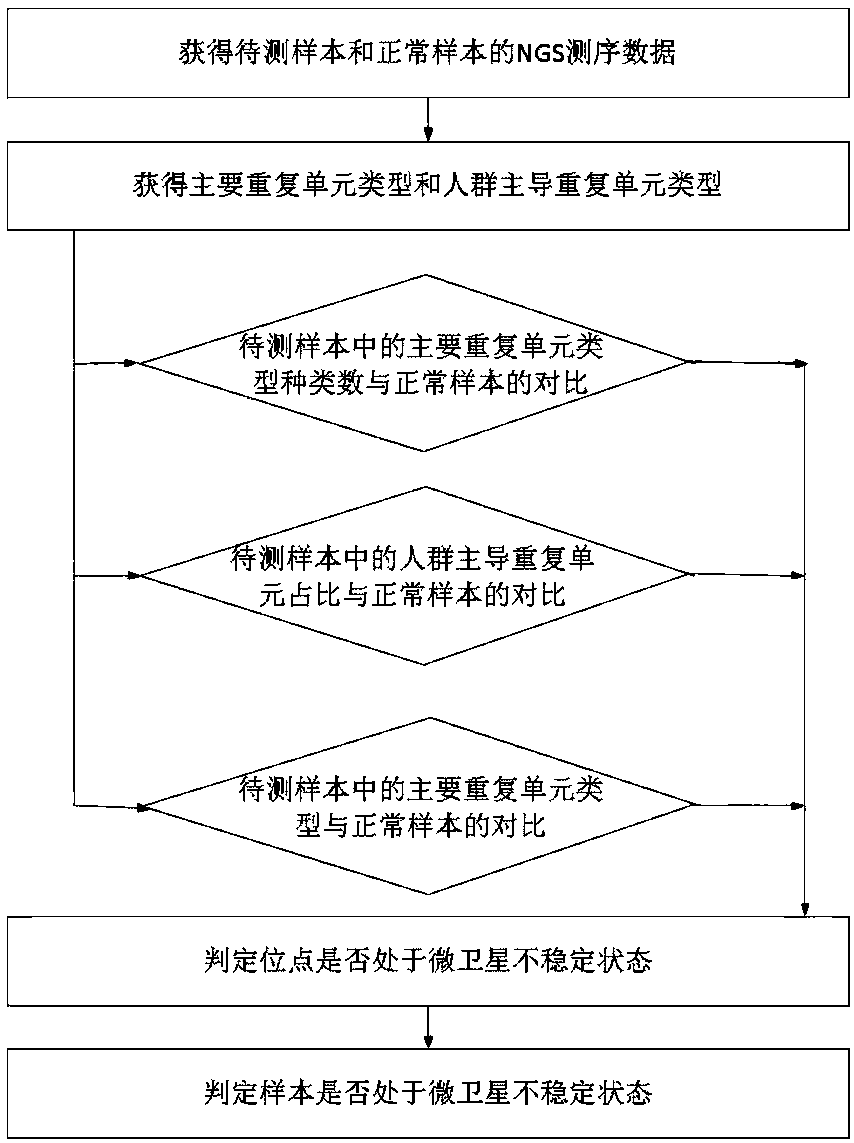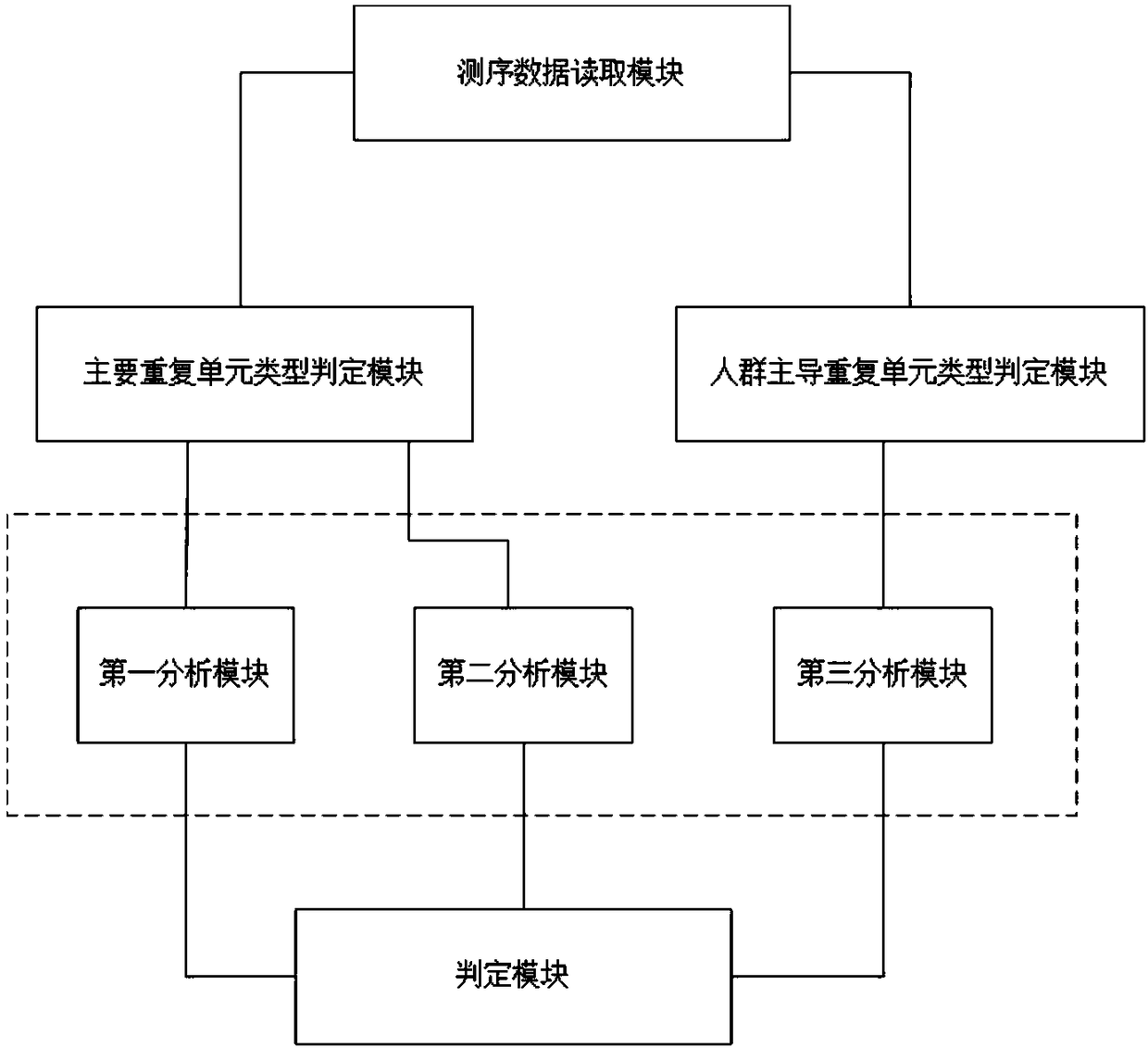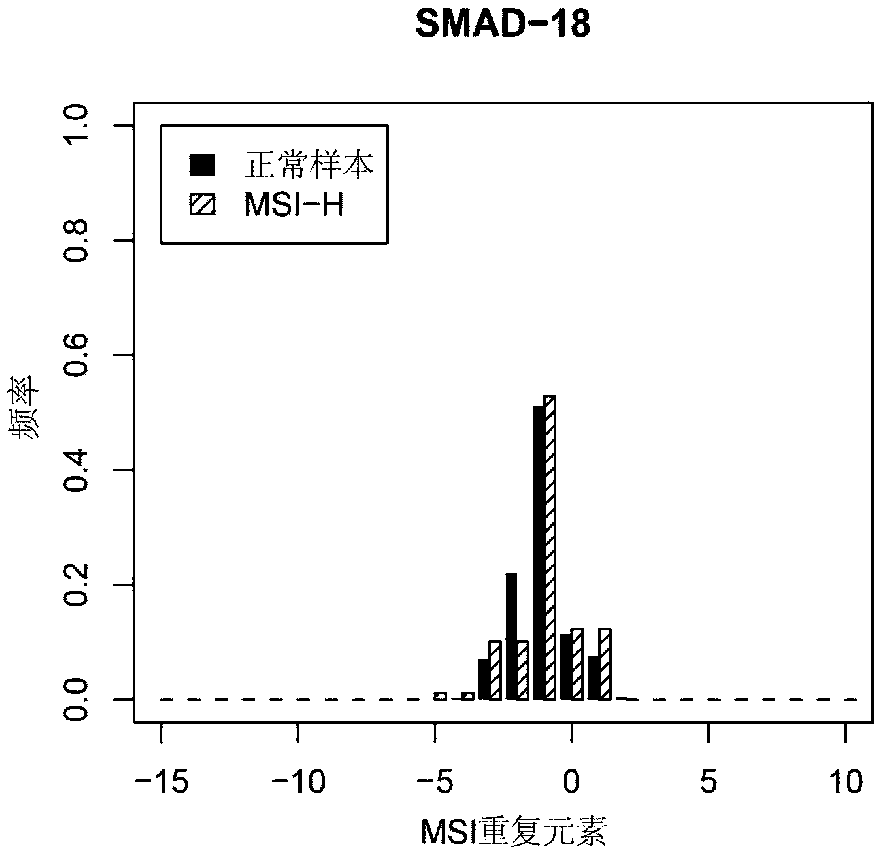Sequencing data analysis method, device and computer readable medium for microsatellite instability
A technology for sequencing data and instability, applied in the field of gene detection, can solve the problem of low sensitivity to microsatellite instability, and achieve the effect of improving detection sensitivity
- Summary
- Abstract
- Description
- Claims
- Application Information
AI Technical Summary
Problems solved by technology
Method used
Image
Examples
Embodiment 1
[0122] Example 1 Preliminary screening of sites
[0123] The following examples of the present invention show the application of the analysis process and MSI site screening method. We performed high-throughput sequencing tests on the tumor tissue samples of 2000 Chinese individuals suffering from solid tumors and the corresponding negative control samples of whole blood. The target genomic interval tested was the whole exon region of 422 cancer-related genes, and Intron regions of some common gene fusions. The detection adopts liquid phase capture method to enrich the target DNA. The sequencing process is a common next-generation sequencing method, and its brief description is as follows: DNA extraction is performed on tissue samples and whole blood samples of each patient to obtain genomic DNA; samples with excessive DNA fragments are broken by ultrasound to mechanically force the samples Break to 200-350 base pairs; perform end-repair, adenine addition, library adapter connec...
Embodiment 2
[0130] Example 2 Data analysis of unstable state of microsatellite sites
[0131] Using the whole blood samples of 100 healthy people in Example 1, and 163 clinical samples of colorectal cancer that have received Promega PCR microsatellite detection, the microsatellite loci were sequenced and analyzed. The sequencing process was performed on the Illumina Next Generation Sequencer Carried on.
[0132] First, after processing the off-machine sequencing data of normal population and patient samples, the reads that can cover 22 MSI sites are found, and then these reads are classified according to the number of single-base repeats in the microsatellite sites. Type and number accumulation. Count the main repeating unit types at each site corresponding to normal samples and patient samples, and count the population-dominant repeating unit types on all normal samples. Then calculate the average and standard deviation of the main repeating unit types at 22 MSI sites (the results are shown...
Embodiment 3
[0142] Example 3 Analysis of microsatellite instability of site combination
[0143] In order to demonstrate the superiority of the 22 microsatellite unstable loci combined with biological indicators proposed in the present invention, the 22 microsatellite loci obtained by screening were compared with 22 randomly selected from the remaining 96 candidate loci. Each site was compared in terms of the accuracy of defining the patient’s microsatellite instability.
[0144] Controlled test 1: Image 6 Shows 22 randomly selected microsatellite unstable points (the numbers in Table 2 are 39, 88, 43, 34, 25, 56, 63, 69, 42, 32, 28, 45, 59, 98, 44) , 50, 85, 99, 67, 53, 52, 66 MSI sites), using only the analysis results obtained from the "number of main repeat unit types". The classification of MSS, MSI-L, and MSI-H in the figure is based on the judgment result of Promagre kit. Each data point is 163 clinical samples that received Promagre microsatellite detection kit, including MSS sample...
PUM
 Login to View More
Login to View More Abstract
Description
Claims
Application Information
 Login to View More
Login to View More - R&D
- Intellectual Property
- Life Sciences
- Materials
- Tech Scout
- Unparalleled Data Quality
- Higher Quality Content
- 60% Fewer Hallucinations
Browse by: Latest US Patents, China's latest patents, Technical Efficacy Thesaurus, Application Domain, Technology Topic, Popular Technical Reports.
© 2025 PatSnap. All rights reserved.Legal|Privacy policy|Modern Slavery Act Transparency Statement|Sitemap|About US| Contact US: help@patsnap.com



